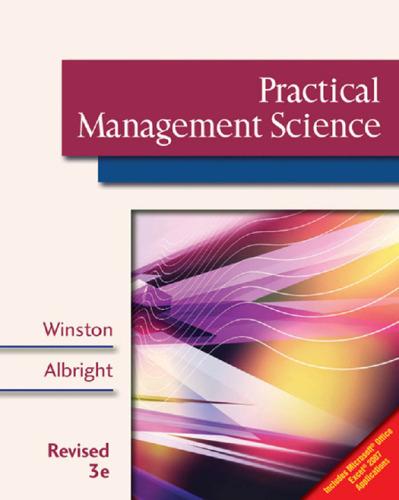It is January 1, 2006, and Merck is trying to determine whether to continue development of a
Question:
It is January 1, 2006, and Merck is trying to determine whether to continue development of a new drug. The following information is relevant. You can assume that all cash flows occur at the ends of the respective years.
■ Clinical trials (the trials where the drug is tested on humans) are equally likely to be completed in 2007 or 2008.
■ There is an 80% chance that clinical trials will succeed. If these trials fail, the FDA will not allow the drug to be marketed.
■ The cost of clinical trials is assumed to follow a triangular distribution with best case $100 million, most likely case $150 million, and worst case $250 million. Clinical trial costs are incurred at the end of the year clinical trials are completed.
■ If clinical trials succeed, the drug will be sold for five years, earning a profit of $6 per unit sold.
■ If clinical trials succeed, a plant will be built during the same year trials are completed. The cost of the plant is assumed to follow a triangular distribution with best case $1 billion, most likely case $1.5 billion, and worst case $2.5 billion. The plant cost will be depreciated on a straight-line basis during the five years of sales.
■ Sales begin the year after successful clinical trials.
Of course, if the clinical trials fail, there are no sales.
■ During the first year of sales, Merck believe sales will be between 100 million and 200 million units.
Sales of 140 million units are assumed to be three times as likely as sales of 120 million units, and sales of 160 million units are assumed to be twice as likely as sales of 120 million units.
■ Merck assumes that for years 2 to 5 that the drug is on the market, the growth rate will be the same each year. The annual growth in sales will be between 5% and 15%. There is a 25% chance that the annual growth will be 7% or less, a 50% chance that it will be 9% or less, and a 75% chance that it will be 12% or less.
■ Cash flows are discounted 15% per year, and the tax rate is 40%.
Use simulation to model Merck’s situation. Based on the simulation output, would you recommend that Merck continue developing? Explain your reasoning.
What are the three key drivers of the project’s NPV?
(Hint: The way the uncertainty about the first year sales is stated suggests using the General distribution from Section 11.3 in Chapter
Step by Step Answer:

Practical Management Science, Revised
ISBN: 9781118373439
3rd Edition
Authors: Wayne L Winston, S. Christian Albright






